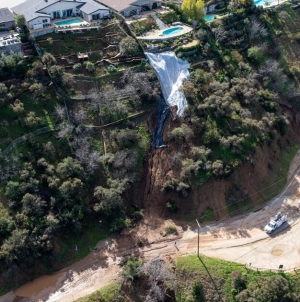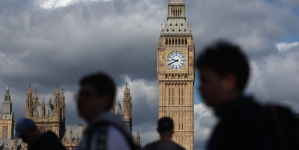-
Abrupt Temperature Change Could Bring Tornadoes and Hail to the Midwest - February 28, 2024
-
A portion of Mulholland Drive, damaged by mudslides in winter storms, reopens - May 26, 2024
-
‘Maybe You Don’t Want to Win’ - May 26, 2024
-
Donald Trump Putting Law Enforcement in Danger: Attorney - May 26, 2024
-
Avoid the waters of these 5 L.A. County beaches this holiday weekend, public health officials say - May 26, 2024
-
Bawdy Comedy ‘Anora’ Wins Palme d’Or at Cannes Film Festival - May 26, 2024
-
Map Shows Heat Wave Zone Spread Into Five New States - May 26, 2024
-
Azusa police arrest suspected slingshot-wielding vandal - May 25, 2024
-
Donald Trump Hammers Judge Ahead of Jury Instructions - May 25, 2024
-
Sometimes U.S. and U.K. Politics Seem in Lock Step. Not This Year. - May 25, 2024
Abrupt Temperature Change Could Bring Tornadoes and Hail to the Midwest
“Record-shattering warmth” followed immediately by frigidly cold weather will create the opportunity for hail the size of hen eggs and possible tornadoes in the Midwest on Tuesday evening into Wednesday morning, National Weather Service forecasters said. Chicago, St. Louis and Indianapolis all have some risk of severe storms, and residents there are also expected to experience an abrupt end to short-sleeves weather.
In St. Louis, the temperature is likely to drop by 40 to 50 degrees, and forecasters warned that severe storms may threaten the area on Tuesday. Severe storms are typically more common in the South during February but are not unheard-of in the Midwest. On average, about one tornado occurs each February in Indiana, two in Illinois and two in Missouri.
On Tuesday night, O’Hare International Airport in Chicago grounded departing planes due to thunderstorms and urged people in the airport to “exercise caution.”
The weather setup has some of the hallmarks of noteworthy severe weather events, forecasters said. Tornadoes are possible across the area at risk. The most likely location for tornadoes is along the border between Kentucky and the southern sections of Illinois, Indiana and Ohio. This includes Louisville, Kentucky, and Evansville, Indiana.
Some of the storms that could produce tornadoes might be especially strong. There is also a chance that tornadoes could occur after dark, which can be more dangerous since people are often asleep.
Here are the things to know.
Storms that can produce tornadoes are most likely to occur between Missouri and Michigan, primarily across Southern Illinois and northern Indiana.
Hail will be a considerable threat, with an increased risk for stones with a two-inch diameter. The risk is highest in the Chicago metropolitan area.
Temperatures may plummet as much as 40 degrees or more after the severe storms pass through Tuesday night into Wednesday morning.
Before the storms, high-temperature records may fall.
Tuesday into Wednesday will be a “tale of two seasons,” forecasters in Chicago said. More than 50 daily record high temperatures could be broken across the central portion of the United States on Tuesday as high temperatures reach 30 to 40 degrees above normal.
Chicago’s February record high of 75 degrees may be threatened. It will feel more like June than February, forecasters said on Tuesday, and even in June, there are many days that are typically not this warm in Chicago.
Forecasters in the city warned that Wednesday may feel like a “slap in the face” when temperatures are expected to drop into the 20s, with blustery northwest winds gusting up to 30 to 40 miles an hour, resulting in wind chills in the single digits and teens. Even a light dusting of snow is possible across some of the same areas hit by storms.































